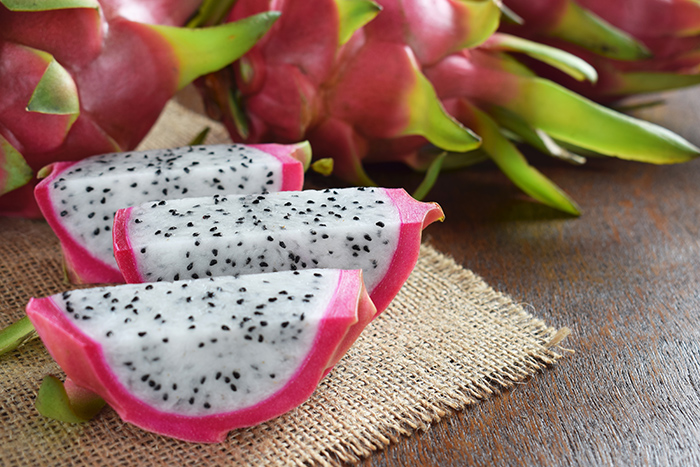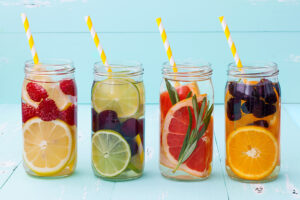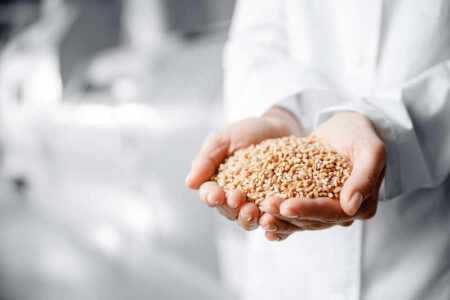The year ahead: how manufacturers can succeed in 2023 and beyond

Image credit: Shutterstock/ Chokchai Daoruang
Heading into 2023, the cost-of-living crisis and recession will inevitably impact both the food and beverage industry and customers interdependently. Rising costs of energy and ingredients; stricter regulation of products high in fat, sugar, and salt (HFSS), including advertising and in-store product placement restrictions; greater demand for sustainable, and natural flavours; shifting consumer preferences, and expectations of optimisation and diversification of food and beverage options all invite challenge.
However, rather than seeing this reshaping of the food and beverage industry as a hurdle, manufacturers can instead view 2023 as an opportunity to grow and innovate with new products. Manufacturers need to be creative, practical, and adaptable to prosper in 2023. This will involve listening to consumers who deserve ‒ and demand – transparency, fair prices, and quality.
Flavour solutions for product optimisation
Manufacturers may incorporate taste solutions into their recipes for a multitude of reasons, but one key benefit is that they offer the ability to improve flavours or reformulate products for cost stabilisation and regulatory requirements, whilst maintaining product quality and desirable tastes. For manufacturers trying to reduce fat content in a product, one solution is to reformulate so that ingredients that contribute to fat levels, such as butter and cream, are reduced. However, removing these ingredients from a product can have a substantial effect on end-product stability, such as reduced visual appeal, shorter shelf life, and a reduction in desirable aromas such as ‘cooked’ and ‘caramelised’ notes. This removal of ingredients can also affect mouthfeel in a product, minimising overall indulgence.
By using taste modulation solutions that have been customised to suit a specific product, manufacturers can reduce butter and cream whilst preventing negative impact. This leaves manufacturers with a product that is delicious, indulgent, and with the appeal of the original. There are additional benefits in terms of cost optimisation, as indulgent ingredients such as butter or cream tend to come at a higher price point. Reducing the volume of these ingredients could therefore also lead to a reduction of costs in this area of the manufacturing process.

Beverages will have ingredients with a natural health halo
Image credit: Synergy
Meeting HFSS standards
Manufacturers must meet the requirements of stricter legislation and align with growing conscientiousness regarding ingredient lists. From October 2022, new UK regulations fell into place to restrict the marketing of prepacked foods high in fat, sugar, and salt (HFSS) defined by the UK government’s nutrient profiling model (NPM), and this especially impacts the dairy, savoury, beverage, and bakery markets. This legislation is due to evolve and by October 2023, restrictions on multi-buy will come into effect. However, with the correct preparation, the new legislation opens up the opportunity for manufacturers to meet consumer desires for ‘better for me’ products, and to create healthier offerings which align with preferred taste profiles.
Taste solutions allow manufacturers to reduce HFSS content via taste modulation, while maintaining the desired flavour profile – whether this is indulgent, rich, sweet, or even paired flavours. Exploring the ‘healthy additions’ route could be another solution for manufacturers looking to go further and actually boost nutritional content, by fortifying products with fibre and protein. All in all, a holistic approach to food and beverage should be on the agenda in 2023.
Sustainable business development
Sustainable practices should stretch from the ingredient and flavour procurement chain to benefit producers, given that today’s consumers claim to pay more attention to sustainability commitments and are increasingly looking for products that provide transparency. 40 per cent of consumers in an FMCG Gurus report said, “It is important that brands demonstrate environmental and ethical credentials”. [1] One example includes global initiatives to improve the livelihoods and communities of small shareholder farmers in Madagascar and other vanilla-harvesting regions, to protect farmers from poor working and living conditions in the demanding vanilla industry. This desire for transparency also goes a step further, as consumers increasingly demand ingredients that have a minimal impact on the environment as well. This is seen in the fact that 70 per cent of consumers in 2022 expressed a preference for ‘environmentally friendly’ ingredients in food, drink and supplement products – which is a significant jump compared to 56 per cent in 2019. [1]
At the same time, consumers are looking for transparency in ingredients lists, and consumers are becoming increasingly aware of what they are putting into their bodies. Natural flavours offer one route to make ingredient lists more accessible for consumers, the importance of this supported by a 2021 study by FMCG Gurus, which found that 74 per cent of global consumers said it was important for food and drinks they consume to be 100 per cent natural. [2]
Provenance, clear product design, and labelling will also play a role, allowing customers to better understand the ingredients in their favourite products, and help inform their purchasing decisions. Clean label options such as depictable, natural fruit flavours will be valuable to manufacturers moving forward, and transparency and openness is an expectation we continue to see in 2023 onwards.
Appealing to consumers via creative innovation
Market research, predicting the next popular flavour combinations, and seeking a range of inspiration all assist manufacturers’ ability to appeal to customers through creative innovation. Being open to trying the next winning flavour combinations, or twists on already popular flavours, are just a couple of ways to excite the market. Validated insights can help – for example, recent market research predicts that sports nutrition products are set to take inspiration from East Asian cuisine, with flavours such as the provincial Japanese plum, salted egg custard flavour, and ramune poised to make their way into 2023 new product development (NPD). The aggregation of search results data, social media research, and consumer research will also help manufacturers inform sports nutrition NPD.
Innovative approaches can also manifest new attitudes to food and beverage. As the popularity of low- and no-alcohol grows, especially among younger buyers, there is an opportunity to redefine the relationship between cuisine and soft drinks. Manufacturers may want to focus their efforts on the growing audience of consumers who want to reduce their alcohol intake by innovating in cuisine paired beverages, offering complex soft drinks that can complement a meal in the way that is currently seen with wine pairing.
Trends for 2023
Each segment of the food and beverage market will witness different trends in 2023, but comfort, indulgence, and affordability will likely be important across all categories.
Plant-based, vegan and dietary-accommodating options should not be neglected, as flexitarians and individuals with dietary requirements contribute to a growing proportion of the market. There has been sustained consumer demand for elevated plant-based options, and manufacturers should seek out solutions that are formulated with analytical protein expertise to compete in this ever-growing market. Plant-based options are now more readily available than ever, and with the plant-based food market projected to grow at a compound annual growth rate (CAGR) of 17.52 per cent over the period of 2022-2027, [3] manufacturers must go above and beyond to stay ahead of the competition.
In soft drinks, we see the potential for fantasy flavour and nostalgic profiles to appeal, evoking a sense of escapism and fun. Savoury notes already popular in mixers are likely to be a hit in soft drinks, as the category lines between complex alcoholic beverages and soft drinks blur. We also expect to see more beverages that contain ingredients with a natural ‘health halo’, which is an ingredient that has perceived natural benefits for wellbeing, cognition, beauty, or mood. Flavours that lend to the claim can heighten natural cues and associations. For example, lavender infusions link to relaxation, ginger to gut health, and turmeric to immunity.
For alcoholic beverages we expect to see more ‘single flavours done well’, with nostalgic and traditional notes staying popular. However, manufacturers should also cater to consumers who are looking for some adventure, such as drinks served in innovative formats or packaging which plays with exciting flavours like dragon fruit or lychee. For those seeking comforting indulgence in the form of liqueurs, flavours such as Madagascan vanilla, butterscotch, salted honey, and provenance citrus evoke a well-earned sense of luxury, which will appeal to a desire to relax in uncertain times.

Hand picking vanilla
Image credit: Shutterstock/2Images Studio
References
[1] ‘Consumer Trust in 2022 – Global Report’ FMCG Gurus, 2022.
[2] ‘Flavor, Color, & Texture Trends in 2021 – Global Report’ FMCG Gurus, 2021.
[3] ‘Global Plant-Based Food Market: Analysis By Type (Dairy, Meat, Egg, and Others), By Distribution Channel (Supermarkets & Hypermarkets, Online, Convenience Stores, and Other Store-Based), By Region Size and Trends with Impact of COVID-19 and Forecast up to 2027’, Research and Markets, 2022.



